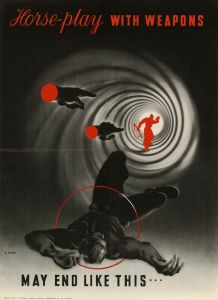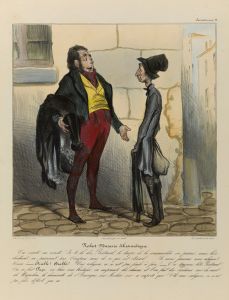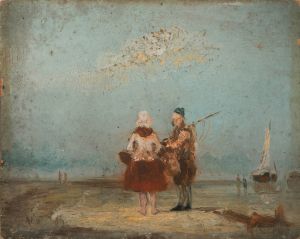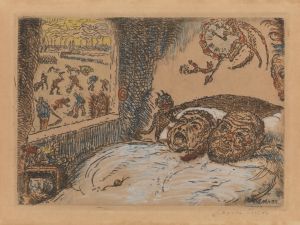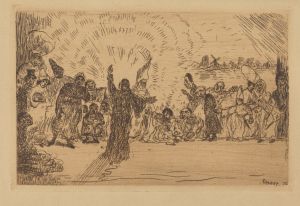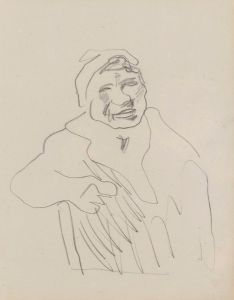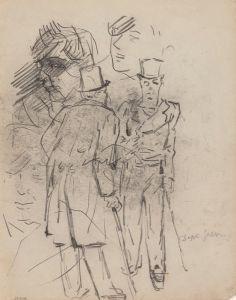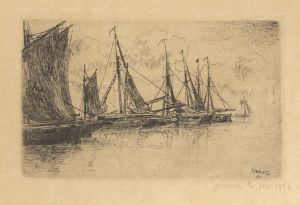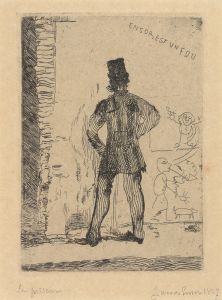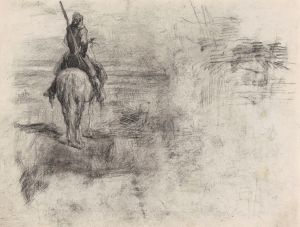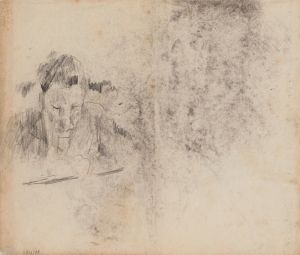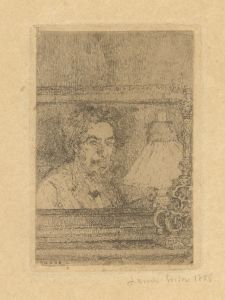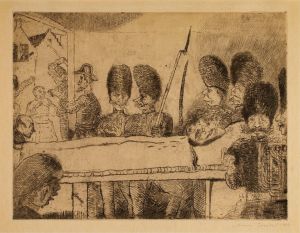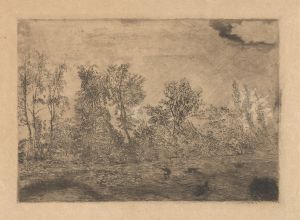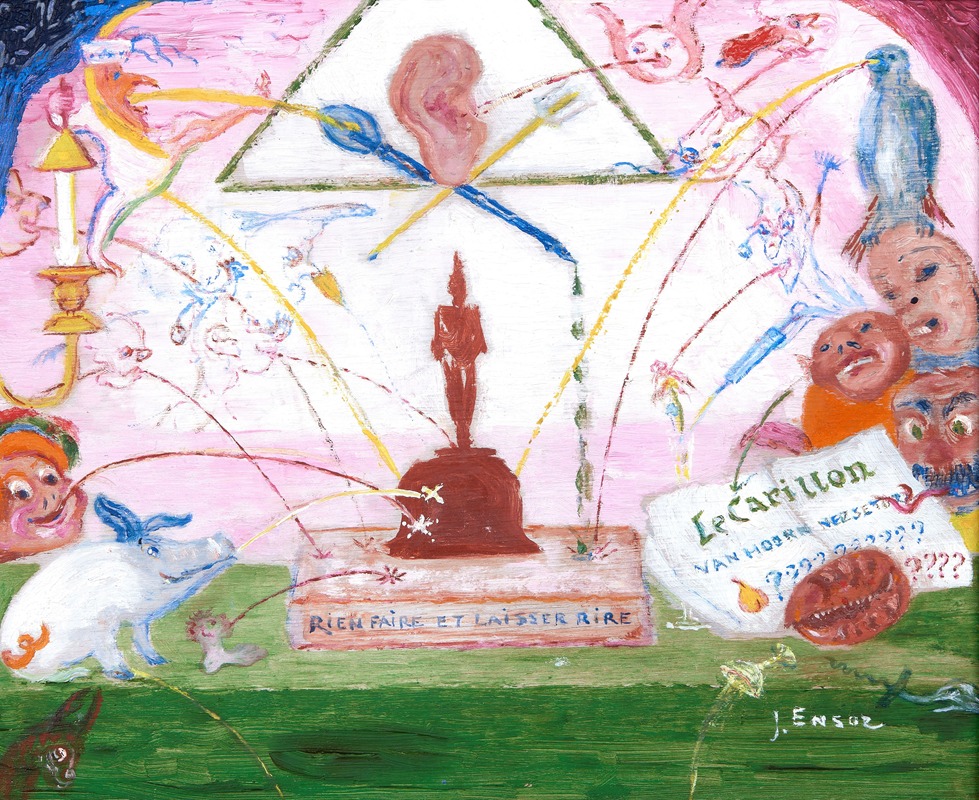
Rien faire et laisser rire
A hand-painted replica of James Ensor’s masterpiece Rien faire et laisser rire, meticulously crafted by professional artists to capture the true essence of the original. Each piece is created with museum-quality canvas and rare mineral pigments, carefully painted by experienced artists with delicate brushstrokes and rich, layered colors to perfectly recreate the texture of the original artwork. Unlike machine-printed reproductions, this hand-painted version brings the painting to life, infused with the artist’s emotions and skill in every stroke. Whether for personal collection or home decoration, it instantly elevates the artistic atmosphere of any space.
"Rien faire et laisser rire" is a painting by the Belgian artist James Ensor, created in 1881. Ensor, born in 1860 in Ostend, Belgium, is known for his unique and often provocative style that blends elements of realism, symbolism, and expressionism. His work frequently features grotesque imagery, masks, and satirical themes, reflecting his critical view of society and the human condition.
The title "Rien faire et laisser rire" translates to "Do nothing and let them laugh," which encapsulates a sense of passive resistance and indifference to societal judgment. This theme is consistent with Ensor's broader body of work, which often challenges social norms and critiques the hypocrisy he perceived in the world around him.
The painting itself is a striking example of Ensor's early style, characterized by its bold use of color and intricate detail. It depicts a scene filled with various figures, many of whom are wearing masks, a recurring motif in Ensor's art. The masks serve to conceal true identities, suggesting themes of deception, anonymity, and the duality of human nature. This use of masks can be interpreted as a commentary on the facades people wear in society, hiding their true selves behind a veneer of respectability.
Ensor's technique in "Rien faire et laisser rire" showcases his skillful manipulation of light and shadow, creating a dynamic and somewhat unsettling atmosphere. The composition is dense and chaotic, with figures overlapping and interacting in complex ways. This complexity invites viewers to spend time exploring the painting, uncovering new details and interpretations with each viewing.
The painting is also notable for its vibrant palette, which includes a range of bright, almost garish colors. This use of color is typical of Ensor's work and contributes to the painting's overall sense of energy and movement. The juxtaposition of these vivid hues with the darker, more somber elements of the scene creates a powerful visual contrast that enhances the painting's emotional impact.
James Ensor's work, including "Rien faire et laisser rire," has been influential in the development of modern art. His willingness to confront uncomfortable truths and his innovative use of color and composition have earned him a lasting place in art history. Ensor's paintings are housed in major museums and collections around the world, and his legacy continues to inspire contemporary artists.
In summary, "Rien faire et laisser rire" is a quintessential example of James Ensor's artistic vision. Through its complex composition, bold use of color, and thematic depth, the painting offers a compelling critique of societal norms and human behavior. Ensor's unique style and fearless exploration of challenging subjects ensure that his work remains relevant and thought-provoking to this day.





